- Home
- Jonathan Maberry
Aliens: Bug Hunt Page 30
Aliens: Bug Hunt Read online
Page 30
The protector feels.
Finally convinced that the crawling, bleating host is alone, the protector rises from the shadows and silently closes in.
The dangerous prey is too weak to fight. It bleats, louder than before. Will that sound bring more of its kind?
Two tidal waves of need crash together—survive and warn… expand the colony.
The protector will satisfy both urges.
With its one good arm, it clumsily lifts the bleating dangerous prey. The host feels so dense. Smaller in size than the protector, but heavier in weight.
The protector starts back toward the colony. As it walks, it drags its tail along the dirt and rocks, leaving a scent trail for others to follow.
The protector is incapable of being happy. Or sad. Or angry. It returns to the colony because that is what it is made to do.
Soon, it hears the colony’s low-frequency rumble-buzz. The protector smells the “us” scent, the one that identifies the protector’s colony as opposed to that of some enemy queen.
The protector knows it is slowing down. The damage is significant, and worsening.
It knows it will not survive that much longer, but it will survive long enough to deliver the warning—and deliver the host.
* * *
The protector carries the dangerous prey into the colony’s main entrance.
During most of the trip, the prey barely moved, but now it struggles. It fights, but it is too weak. The protector can’t understand why a creature that weighs so much has so little strength.
The colony is warm. Comforting. It is thick with scents: acid, waste, chitin, with pheromones identifying individuals, castes and groups. It is loud with noise: the low rumbles of sound produced by the folded air chambers within the protectors’ long heads, the high-pitched hisses of close communication, the endless tapping of claws and tails radiating through the secreted material that makes up most of the colony.
Others notice the protector, notice what it is carrying. They flock to the host, touch it, smell it, sometimes taste it, listen to its strange bleating. The protector senses growing agitation and anxiety in the others—they need to go out, to collect more hosts like these and bring them back.
The protector presses its head against a wall thick with the dried secretions of its kind. It hums out a message. The low frequency vibration carries through the material, spreading through most of the colony. The message isn’t a word, but it communicates a simple message that all understand: new hosts.
This message brings more others. Many more. They swarm in from a dozen openings.
The prey struggles against the hands reaching for it. It tries to turn its face away from those hands, but there are so many the face vanishes beneath a thick layer of twitching black.
The bleating… louder than ever before.
Others press in so tightly that the protector can’t move, is held upright by the mass of bodies that want to know more about this host. Pheromones swirl, noise thumps, a swaying mass of black undulates with an unstoppable rush of want.
If there were words to be shouted, if there was a war cry to be screamed, the tunnels would shake with a single, maddening, phrase:
Expand the colony…
The protector’s scent trail will lead the others back to the area of the battle, which is close to a host hive. But that scent trail signifies a path only—it doesn’t communicate the level of threat. The protector emits low sounds from the long sound chamber that comprises most of its long head: five deep croaks to signify the five enemies the cadre encountered. The protector extends its secondary mouth, clacks it in a chattering pattern that signifies the dangerous prey can kill from a distance. The protector twitches its long head side to side, angles it sharply: the loud-stings produce vibrations that confuse the senses—the next cadre needs to be prepared for this. Finally, the protector emits mimicked identifying scents of its nine dead cadre mates, combined with the death-scent to communicate that they are gone.
The dead protectors will not be remembered. They are only referenced so the others know that the dangerous prey can kill in high numbers. The dangerous prey are a threat to the colony—they must be collected, or they must be eliminated.
The colony’s activity intensifies. Agitation and aggressiveness toward this new threat combines with the overwhelming drive to collect more hosts. Others pack in close, they hiss and screech, they climb the walls, they skitter across the ceiling driven by a desire that mimics madness, they throng together with an orgiastic need so pure and intense it borders on madness.
This is what they were made for.
The others start to pour out of the colony, following the protector’s scent trail toward the prey’s hive.
The protector knows what it must do next.
It takes the wounded prey deeper into the colony.
* * *
The protector carries the host into the egg chamber. Two others are there, guarding the eggs.
No, the protector can’t feel emotion, but there is an undeniable sensation at coming into this place. If that could be put into a single word, that word would be hope.
In this room is the future of the colony, contained in the eggs that dot the floor.
More scents. The protector moves to the part of the room that smells ready, where eggs have entered the final stage. The mature couriers inside the eggs seem to sense the presence of the host. The protector hears the rustling of little legs, the curling and contracting of tails ready to launch the couriers toward any hosts that passes by the moment the eggs open. The couriers also make small sounds, instinctively tapping feet together in patterns that call out I am ready, choose me.
But one egg does more than tap, more than shiver and twitch.
One egg sings.
A signature sound, the likes of which the protector has known only through vibrations in the walls and floor. This sound calls to the protector, draws it in.
Yes, this egg is the one.
The protector is weakening. Too much damage. It has enough strength left, though, to hold the host against the wall near the singing egg. The prey has stopped bleating, stopped struggling. The protector and the two others press pieces of hard material against the prey’s limbs, then spit on those pieces. The spit instantly grows tacky. Almost as quickly, the spit hardens, locking the host in place.
The prey was dangerous. Now it is immobilized. Now it is cocooned.
Soon, the egg will open. The courier will join with the host.
The protector’s legs give out. It stumbles, almost falls into another egg.
Too much damage.
The others in the egg chamber come closer. They touch, they smell, they taste. They secrete pheromones not of concern, but rather, of finality. The protector smells these pheromones, tastes them, and understands that the time has come for one last act, one final way to contribute to the colony.
* * *
Weak, unable to move any further, the protector is placed in front of the Queen.
This protector has never before been in the Queen’s presence. Now that it is, the protector has a sensation of completeness. Of fulfillment.
The Queen is glorious. The Queen is everything.
And the Queen… the Queen is dying.
The protector understands: this final moment will help her survive a little while longer, and what helps the Queen helps the colony.
The Queen lowers her huge, beautiful head, touches it to the protector’s. The Queen hums. The protector’s body vibrates with that sound—with the song. In that song, the protector understands that the Queen knows. Knows the protector brought a host. Knows the protector left a path to more hosts. In that sound, there is pride. Acceptance. There is something else that the protector’s brain isn’t sophisticated enough to comprehend, but if it could, that something else might be called gratitude.
The protector has done well.
And now, the protector can serve the colony in one final way.
The protecto
r has no concept of time, no concept of distance or space. There is no philosophy in its thoughts that it has lived a complete life, a life of selfless service. But there is a calmness, a sensation of peace.
It did everything it was made to do.
The pain will end.
The Queen’s primary mouth opens.
There is no struggle as sharp teeth slice through the protector’s carapace, one scraping bite after another.
As the protector’s legs and arms and tail tremble and twitch, it feels and hears the Queen feeding upon its body.
* * *
The egg does not think. The egg does not feel. But the egg can sense. And, the egg knows.
There are three primary things an egg is engineered to recognize: vibrations that indicate movement and size, repetitive rhythms, the presence of a particular waste gas. Any two of these factors can combine to trigger muscle contractions, to peel back the lips that protect the courier deep inside.
The egg’s specialized cells detect the presence of that gas: CO2. Suitable hosts emit this gas. The egg doesn’t understand this in any way, wouldn’t know what CO2 was if it even had a brain to understand anything, which it does not.
It detects no vibrations that indicate movement of a nearby host. The egg doesn’t listen, but it does feel. The egg’s skin is a sensory organ so finely attuned it can detect not only the steps of a potential host, but also something far softer—the steady rhythm of a heart.
Faint, but unmistakable: bump-bump, bump-bump, bump-bump.
A host is close by.
Waste gasses. A heartbeat.
Almost…
The heartbeat is erratic. Weak. If it were stronger, steadier, the egg would have already opened. The egg’s genetic code programs for one specific command above all others—make sure the host is healthy enough to survive implantation and gestation. Because once the egg opens, the courier will soon die whether the embryo is delivered or not.
And the courier inside this egg, this courier above all others, it must deliver its embryo.
The play of impulses across the egg’s nervous system feeds into an automated yet complex response analysis process. CO2, yes, but the host’s pulse indicates it might not live long enough.
Then, the erratic heartbeat steadies, becomes more rhythmic.
The host isn’t healthy, but it is healthy enough.
With a soft squelch, the lips curl backward.
* * *
For the first time ever, air caresses the courier’s skin. Nerves fire. Neurotransmitters flood the delicate circulatory system. Muscles that have lain dormant finally twitch and flex.
The courier doesn’t think. It reacts. It responds. Evolution has ingrained a clock of sorts into the very fiber of its being—as soon as it is exposed to air, it must move quickly, for it will soon cease to function.
The courier is engineered to find the target that must be nearby.
It detects CO2.
Then, a heartbeat.
If neither of these things were present, it would still react to nearby movement. Any of these stimuli are enough to drive it to complete its purpose, its sole reason for existence.
The courier stretches out eight long, quivering limbs. Limb-tips press against the egg’s firm wetness. The courier slides from the deep safety of this womb. Its tail remains in the moist warmth, while the rest of its body feels the coldness of this world.
The courier focuses—CO2, the rhythm of a heartbeat—and it turns toward those stimuli.
A courier’s eyes are simple things. They detect movement, and also areas of light and dark. It is the latter ability that best helps it in targeting: across the universe, most advanced creatures have more than one eye. Usually two, but sometimes three, or even four. No matter how many eyes, though, all of these creatures have only one opening for the mouth.
The mouth is where the courier needs to go.
The courier scans the pattern of light and dark before it: two small darker areas, one large one.
Eight limbs tremble. Eight limb-tips press down. The tail coils, pushes against the egg’s soft, firm interior.
CO2.
A heartbeat.
Two small spots above a larger one.
The tail extends, hard and fast and instant, launching the courier through the air. Legs spread wide, ready to clutch, to hug.
It lands.
Limbs clamp around the host’s head.
The tail coils about the host’s neck, squeezes tight.
The host struggles; teeth gnash together, as if it knows what comes next. The courier’s sensitive underbelly feels the host’s lips, marks the location of teeth and jaws.
The courier’s tail constricts.
The host’s skin is warm, warmer than the air of the chamber. The courier feels the host’s heartbeat increase, faster and faster and faster.
The host struggles, resists, tries to endure, but it cannot draw air. When its own biology betrays it, when the mouth finally opens for a desperate breath, bony curves extend from the courier’s underbelly, hook under the host’s upper teeth and over the bottom teeth. The courier’s powerful muscles hold the jaws open, prevent the teeth from biting down.
The courier extends its proboscis into the host’s open mouth, forces it down the host’s warm, wet throat. The courier delivers lungfuls of air, keeping the host from suffocating. But the proboscis has another function, one just as important as delivering oxygen.
Deep in the host’s chest, in the lower esophagus, the future of the colony begins.
* * *
This prey is dangerous.
This prey is a threat to the colony.
Such threats require absolute and overwhelming action.
The protector does not mourn the one who laid this scent trail. The protector is as capable of sadness as it is of fear, which is to say, not at all.
The protector is not intelligent, but it is also not stupid. The protector can count. In a rudimentary way only. It can’t multiply or divide. It has no words or symbols for the numbers it knows, and yet it knows the numbers. The protector recognizes the identifying scent of each and every other in this new cadre, this large cadre.
One hundred and sixteen others.
The largest cadre the protector has ever known.
* * *
The scent trail ends.
The protector clusters with the others in the darkness.
Death-scent permeates the air. A battle happened here. Nine protectors died.
The hosts must be close by. The cadre must find them.
The protector crouches on the soil, places its palms flat on the dirt and rocks. The others do the same.
Through the ground, the protector feels the natural sensations of the nighttime landscape: a breeze blowing sand and dirt across the surface; the barely discernible tickle of nearby insects and small animals; the familiar cadence of another cadre moving across the ground somewhere nearby.
And then, the protector feels it. So very faint and distant—the rhythmic thump of something solid, heavy. Something on two legs, something not like itself… something alien.
The protector turns its head to face slightly right—the direction from which the vibrations come. It does not know how far away this threat is, but it is not near.
Silence is the constant rule, yet the protector is the de facto leader of this cadre—it risks a hiss. Just this protector, just one hiss, so enemies can’t tell how many others there are. The sound wave spreads out, hits rocks and sparse plants, bounces back. The protector’s echolocation maps objects in the area before it.
In that area, it detects no movement.
The protector stands taller. It hisses again, a little louder so it can “see” a little farther. When these sound waves bounce back, the protector senses something else, something very important: flat surfaces, thick forms rising high into the air.
A hive.
The protector silently stalks toward the hive. As one, the cadre rises and follows.
* * *
The hosts’ hive is massive. It is made up of many mounds with unnatural, flat sides. The protector has never known anything so large. The protector’s colony lies beneath the surface—this alien hive’s tall mounds rise up to the sky. Many lights shine. It is night, it is dark, but in some places the hive is as bright as day.
The cadre doesn’t approach right away. It holds position behind a slight rise. The protector is the only one looking above that rise. The others stay down in the darkness, so still they look like rocks.
Loud-stings finally give away the prey’s location—rapid-fire flashes, coming from outside one of the hive’s mounds.
This is the dangerous prey. The protector tries to count them, but they are behind small barricades and the flashes make it difficult to identify individuals. The protector’s primitive brain first thinks seven, then eight.
Another cadre is attacking the dangerous prey. The hosts do not flee—they stand their ground. So many flashes, so many loud-stings. The protector watches as his kind fall, one after another. Some lie still. Some twitch. Some thrash in place. A few rise and continue the attack, only to be struck down again.
Even from this distance, the loud-stingers create painful shockwaves. The protector’s body, the bodies of the others, evolved to sense vibration and sound—they all suffer from the concussive forces echoing sharply from behind the barricades.
The protector quietly calls out. Two others approach. These individuals aren’t special. There is no “leader” caste. Protectors are almost identical to one another. These two responded to the call simply because they were closest.
The three protectors press in against each other. When their bodies are touching, the low-frequency signals made in their long vocal chambers are transmitted by conduction.
To call what happens next a “plan” is too grandiose a term. A plan would require forethought, analysis, strategy. What happens is far simpler than that.
The other on the protector’s right drops back behind the ridge and scurries away to the right, thirty others following silently along with it.
The other on the protector’s left also drops behind the ridge. It—and thirty more just like it—will rush toward the dangerous prey from this very spot.

 Flesh & Bone
Flesh & Bone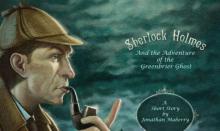 The Adventure of the Greenbriar Ghost
The Adventure of the Greenbriar Ghost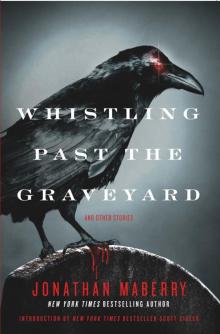 Whistling Past the Graveyard
Whistling Past the Graveyard Scary Out There
Scary Out There The Wolfman
The Wolfman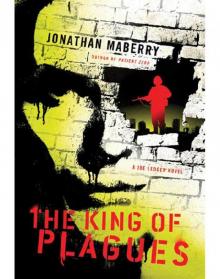 The King of Plagues
The King of Plagues Doctor Nine
Doctor Nine Fire & Ash
Fire & Ash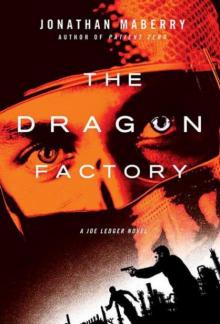 The Dragon Factory
The Dragon Factory Deadlands: Ghostwalkers
Deadlands: Ghostwalkers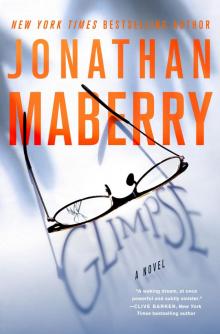 Glimpse
Glimpse Mars One
Mars One Benny Imura 03.5: Tooth & Nail
Benny Imura 03.5: Tooth & Nail Bits & Pieces
Bits & Pieces Dust & Decay
Dust & Decay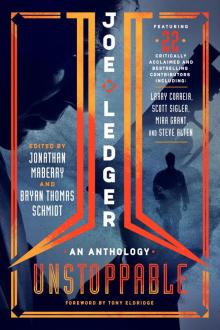 Patient Zero
Patient Zero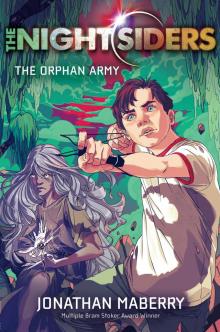 The Orphan Army
The Orphan Army Ghost Road Blues
Ghost Road Blues Vault of Shadows
Vault of Shadows Dust and Decay
Dust and Decay Rot and Ruin
Rot and Ruin Code Zero
Code Zero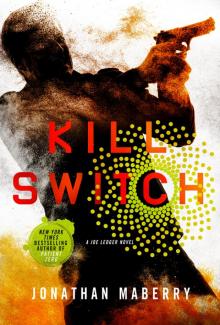 Kill Switch
Kill Switch Like Part of the Family
Like Part of the Family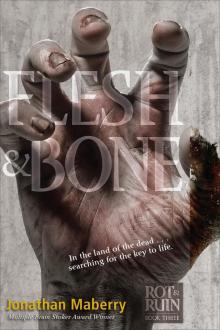 Flesh and Bone
Flesh and Bone Bad Moon Rising
Bad Moon Rising V-Wars
V-Wars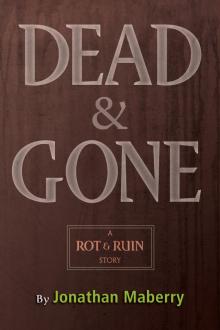 Dead & Gone
Dead & Gone Fire and Ash
Fire and Ash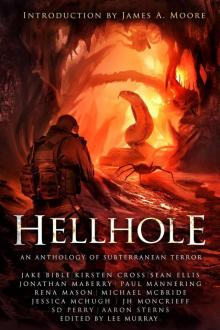 Hellhole
Hellhole Countdown
Countdown Dogs of War
Dogs of War Pegleg and Paddy Save the World
Pegleg and Paddy Save the World Dead Mans Song
Dead Mans Song Assassin's Code
Assassin's Code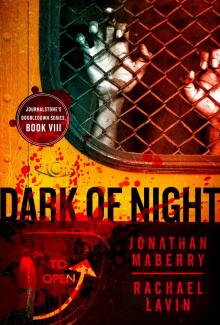 Dead of Night
Dead of Night Zombie CSU
Zombie CSU Dark of Night - Flesh and Fire
Dark of Night - Flesh and Fire Aliens: Bug Hunt
Aliens: Bug Hunt Broken Lands
Broken Lands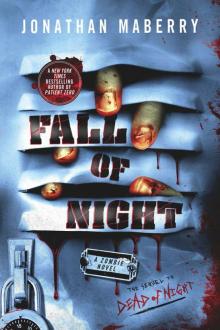 Fall of Night
Fall of Night Ink
Ink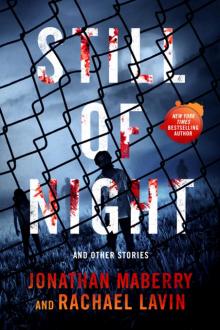 Still of Night
Still of Night Relentless
Relentless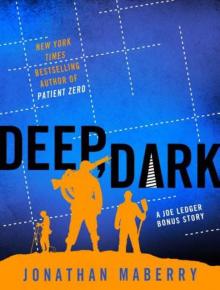 Joe Ledger 1.20 - Story to the Dragon Factory - Deep, Dark (a joe ledger novel)
Joe Ledger 1.20 - Story to the Dragon Factory - Deep, Dark (a joe ledger novel) Property Condemned (pine deep)
Property Condemned (pine deep)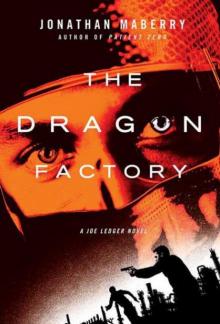 The Dragon Factory jl-2
The Dragon Factory jl-2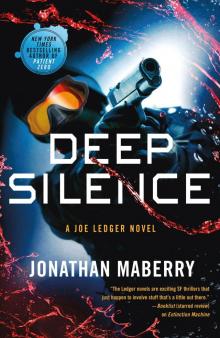 Deep Silence
Deep Silence Joe Ledger
Joe Ledger SNAFU: An Anthology of Military Horror
SNAFU: An Anthology of Military Horror Assassin's code jl-4
Assassin's code jl-4 Code Zero: A Joe Ledger Novel
Code Zero: A Joe Ledger Novel Fire & Ash bi-4
Fire & Ash bi-4 Tooth & Nail (benny imura)
Tooth & Nail (benny imura) Dead Man's Song pd-2
Dead Man's Song pd-2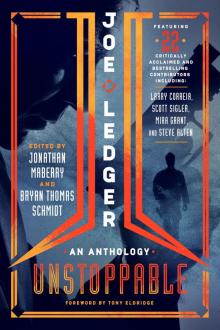 Joe Ledger: Unstoppable
Joe Ledger: Unstoppable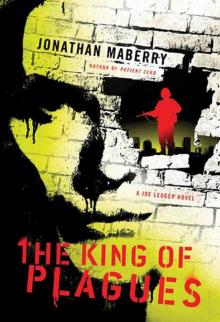 The King of Plagues jl-3
The King of Plagues jl-3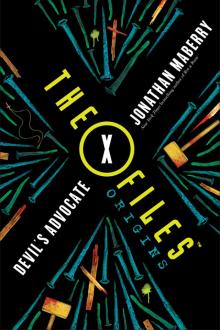 The X-Files Origins--Devil's Advocate
The X-Files Origins--Devil's Advocate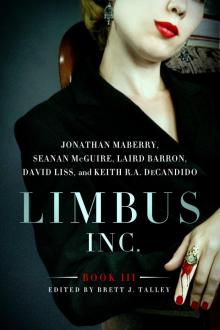 Limbus, Inc., Book III
Limbus, Inc., Book III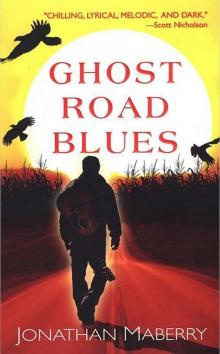 Ghost Road Blues pd-1
Ghost Road Blues pd-1 Patient Zero jl-1
Patient Zero jl-1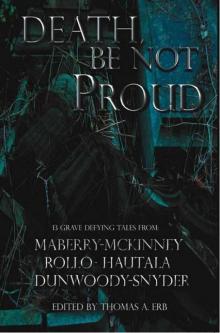 Death, Be Not Proud
Death, Be Not Proud Countdown: A Joe Ledger Prequel Short Story to Patient Zero (joe ledger)
Countdown: A Joe Ledger Prequel Short Story to Patient Zero (joe ledger) Aliens
Aliens Extinction Machine jl-5
Extinction Machine jl-5 Ghostwalkers
Ghostwalkers Flesh & Bone bi-3
Flesh & Bone bi-3 Joe Ledger 2.10 - Material Witness (a joe ledger novel)
Joe Ledger 2.10 - Material Witness (a joe ledger novel) Nights of the Living Dead
Nights of the Living Dead Dead & Gone (benny imura)
Dead & Gone (benny imura)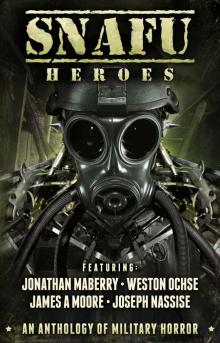 SNAFU: Heroes: An Anthology of Military Horror
SNAFU: Heroes: An Anthology of Military Horror Tooth & Nail: A Rot & Ruin Story
Tooth & Nail: A Rot & Ruin Story